QuestionI have only had this anole (female) for a couple of weeks. My daughter brought her home from a trip to the shore with a friend. They gave her mealworms to feed her and she would eat 4 or 5 at a time. After doing research I discovered that crickets and waxworms were better. She really does not like the crickets (small of course) so I purchased waxworms. The were so big I put two in and she ate both but since has not eaten at all in 4 days. She is pooping and they are nice and solid not runny. What is wrong?
AnswerHi T,
Waxworms really aren't a staple insect for lizards as that they are too high in fat content and can cause fatty liver disease. Limit wax worms to a treat every few weeks.
Crickets are a better choice over mealworms but, if she won't eat the crickets..it doesn't matter how much more nutritional they are.
With the meal worms...its best to raise your own then you are able to feed fresh shed ones. They are the ones that are white. They haven't developed the hard outer body yet so there is little chance of impaction from them. Meal worms are simple to raise.
On the crickets..it may be the dusting with calcium or vitamins that she doesn't like. If you are dusting them, try offering her some w/o dusting and see if she eats them. Sometimes its the jumping of the crickets that they don't like. You can break the hind legs off the crickets and see if that helps.
Also, when they don't have the right temperatures, they cannot properly digest their foods. They also need a good source of uvb so that they are able to process the calcium in the foods they eat. I am including a basic care sheet so that you can read about good uvb and also other care areas.
BASIC ANOLE CARE NEEDS
Adult anole size is up to 9 inches.
Males generally have a larger dewlap than females. Males are larger than females. Males have a brighter, larger red throat,Females MAY keep the stripe down their back. Mature males have a hemipenes bumps on either side of their tail base.I believe anoles are considered mature when they reach about 5 inches snout to tail tip length. Average life span is about 4 years, but many live twice that with good care.
TEMPERATURES:
They need a basking area temperature gradient of 85-93 degrees. These temperatures are needed to properly digest their foods. The basking area is one area of their cage. The overall or ambient temperature of their tank gradient upper 70-s to 80 degrees. 75 degrees for a cool area. Temperatures of 65-75 at night is fine. NEVER use heat rocks or heat caves for Anoles!! They malfunction and will cause death to the anole.
LIGHTING: THEY MUST HAVE UVB!!!!
Anoles need UVB, which is the special lights that come in fluorescent tubes. UVB is needed by the anoles to be able to absorb the calcium in the foods they eat. With out the uvb, they will develop metabolic bone disease. With the tubes, they must say that they produce BOTH uvb and uva. The uvb needs to be 5% or higher. Repti Sun 5.0 are one of the best uvb tubes on the market.The "Iguana light" is the same tube, just different packaging. There is also a repti sun 10.0 tube that is very very good. The repti glo 8.0's are testing out to be a great uvb source also. The 5.0 and 8.0 need to be positioned 6-8 inches over the anole so that they get the uvb that is needed. The 10.0 can be 8-10 inches above the Anoles level. The tubes need to be replaced every 6-9 months as that they stop producing uvb long before they stop producing light.
There has been new studies that have proven that compact uvb lights, both the spiral/coil type and the ones that look like long "U's" laying on their side and a few other brands are causing what basically amounts to snow blindness in reptiles. The tubes do not produce heat. With out the uvb, they will develop metabolic bone disease. There are tubes that say ''full spectrum'' but they do not produce any uvb.
With the correct tubes, they must say that they produce BOTH uvb and uva. To read more on this, you can go to http://www.uvguide.co.uk/index.htm
The link will take you to my discussion group and to a post that tells how to tell the new compacts from the old ones. IF you are using one of the new ones, then the light should not be the problem. http://pets.groups.yahoo.com/group/UVB_Meter_Owners/message/6721
heat. The wattage will depend on the size of enclosure. and the room temperature.
For daytime heat, if using the tube uvb, regular household incandescent lightbulbs produce heat. The wattage will depend on the size of your anoles enclosure. At night you need to provide a heat source in the form of a ceramic heat emitter(which can also be used during the day) or a special nighttime bulb(red or deep purple) that does not produce any bright white light if the temperatures drop below the recommended night temperatures. Undertank heaters can also be used to add lower heat to the tank.
DIET:
Anoles eat daily. They are insectivores. Their food must not be too big for them (no larger than 1/2 the size of their head. All insects that are fed to them must be properly gut loaded for at least 48 hours before feeding them. Crickets, silk worms,trevo worms, wax worms are all part of their varied diet. Many will even eat babyfood fruits and possibly the meats. They are used as treats(once or twice a wk) and are wonderful for hydration. The Gut loading is feeding the insects a nutritious diet prior to feeding the insects to the anoles. This can be accomplished with feeding a recommended "diet" for the insect. ( http://www.anapsid.org/feedingbugs.html ) The crickets can be fed vegetables and cereals. Chicken laying mash is a good choice of food for the crickets as are other commercial foods designed for crickets.Their food needs to be dusted with calcium powder (rep cal calcium with no added phosphorus or vitamin D3 is a good brand) two times a week. Some may eat a bite or two of fruit. A vitamin should be used once a week. Rep Cal Herptivit is a good brand. Be sure to remove any crickets your anole has not eaten after 20 minutes or so to prevent the crickets from nibbling on your anole. Keeping your crickets well fed will help prevent this. Place a piece of cut potato in the tank.
HOUSING:
A 20 gallon tall or larger tank or mesh vivarium is recommended for an Anole. As with almost all reptiles, its best to house them separately. Males can NEVER be housed together as they will fight over territory. Females MAY get along, but doesn't always happen.
Provide several basking branches and plants (silk and plastic)for your Anole. Be sure that all plants and branches are well anchored. For substrate(flooring) the best is plain unprinted newspaper or paper towels... its cheap and easy to clean..and the best part is its safe. Paper towels and lizard carpeting may also be used. Some of the soil mixes are ok to use also.
Stress is the usual cause of an anole turning brown. Stress with them can be caused by incorrect temperatures, other animals that they see, incorrect or no uvb, housing problems (not "natural" enough for them with plenty of plants, etc) housing two males together, (or just two that do not get along)tank not large enough ( for two anoles(male and female or possibly two females)
WATER:
Their water consumption is from dripping leaves. Misting the tank is important. Humidity needs to be in the 60-70 % range. Be sure to provide a small dish of fresh drinking water daily.
This is by no means a complete caresheet on anoles. Please be sure to check out the following link for more in-depth anole care.
http://www.kingsnake.com/anolecare/5.htm
Also, its a good idea to find a Vet before one is actually needed. Reptiles need vets that are trained to treat them. You can find a vet in your area by going to:
http://www.herpvetconnection.com
http://www.arav.org/ECOMARAV/timssnet/amm/tnt_mdsearch.cfm
http://www.anapsid.org/vets/

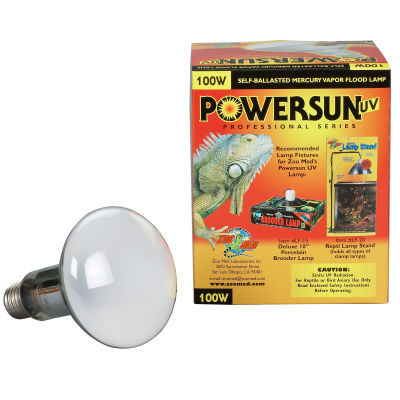 thank you w/ 1 important question
QuestionQUESTION: Hi Pam, my name is Jared and I am fro
thank you w/ 1 important question
QuestionQUESTION: Hi Pam, my name is Jared and I am fro
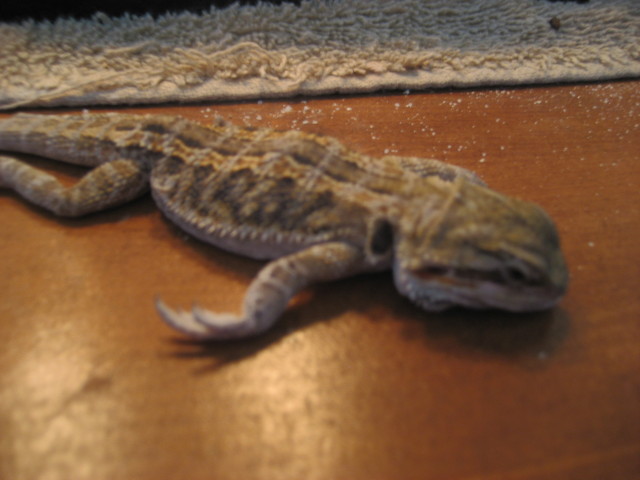 stomach blockage?
QuestionQUESTION: I got my first bearded dragon last ch
stomach blockage?
QuestionQUESTION: I got my first bearded dragon last ch
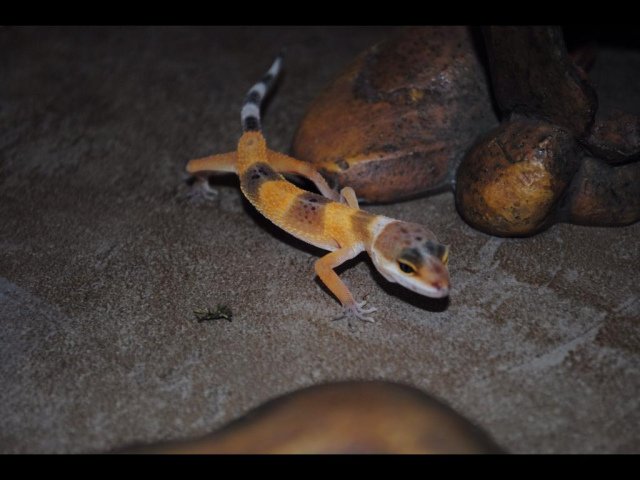 Picture of my leo
Question
My baby Leo
Hey,Sorry I had to make another qu
Picture of my leo
Question
My baby Leo
Hey,Sorry I had to make another qu
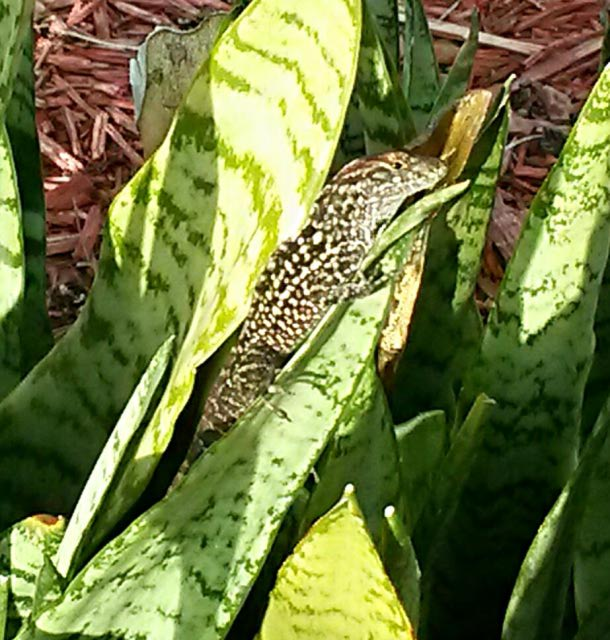 species identification
Question
unknown
I live in Cape Coral Southwest
species identification
Question
unknown
I live in Cape Coral Southwest
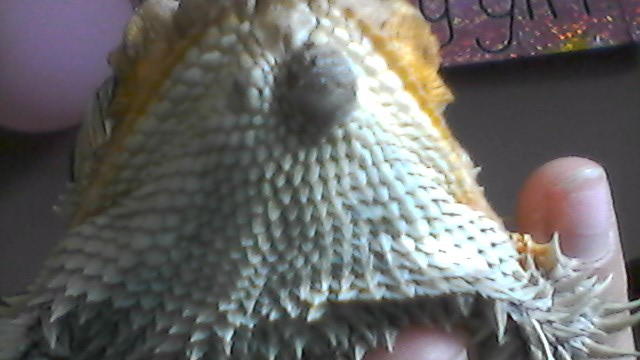 Bearded Dragon Wart/Mole/Skin Tag
Question
Wart Wart2
Hi Mick. Thank you for
Bearded Dragon Wart/Mole/Skin Tag
Question
Wart Wart2
Hi Mick. Thank you for